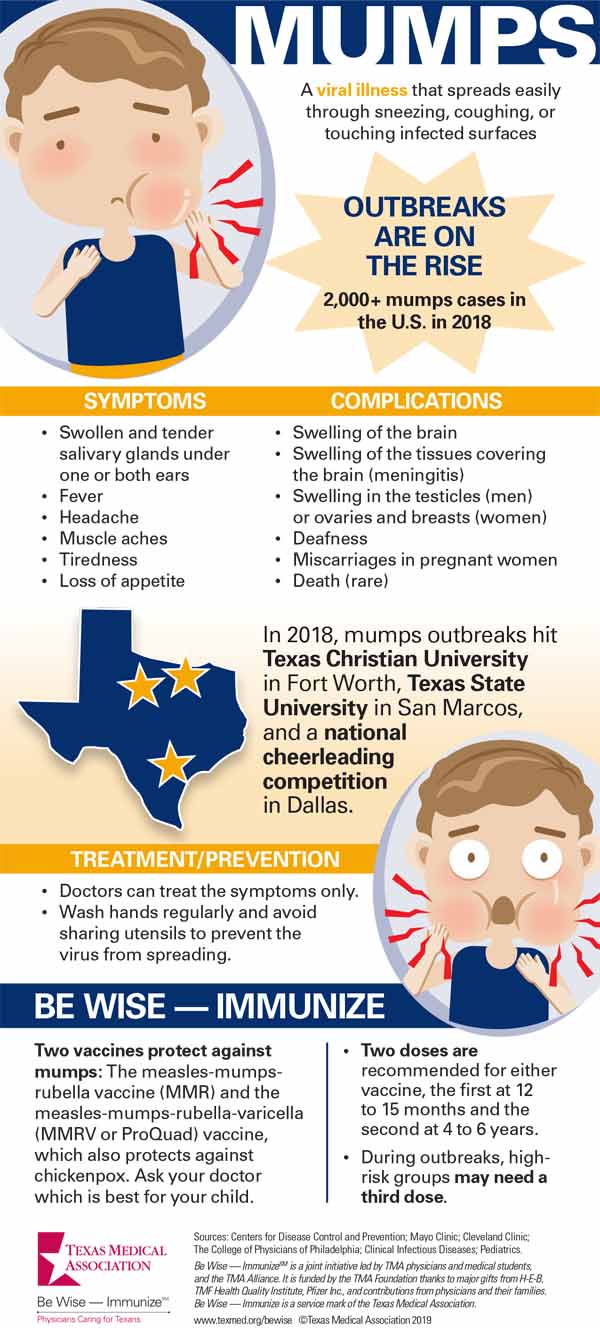There is a lot of misinformation about vaccines, so each month Texas Medicine magazine highlights a disease that childhood and adult immunizations can prevent. The material is designed to help you talk to your patients about the severity of these diseases and to help them understand the benefits of vaccines.
The March issue of Texas Medicine highlights mumps, which spreads easily through sneezing and coughing, or just touching infected surfaces. A vaccine, first introduced in 1967, reduced U.S. cases by 99 percent, according to the Centers for Disease Control and Prevention (CDC).
However, mumps still can spread among vaccinated groups, a sign that immunity may wear off for some people as they get older, according to a 2018 article in Clinical Infectious Diseases.
Mumps still spreads much faster and more dangerously among unvaccinated groups, and immunization remains the best protection. CDC recommends children get two doses of the vaccine (MMR), which also guards against measles and rubella, and can include chickenpox (MMRV). Unvaccinated adults and college-age students also can receive the vaccine, and during outbreaks, high-risk groups may need a third dose.
Visit the TMA website to see and download a TMA video and infographic about mumps for your patients. Also, check out articles on efforts to raise immunization awareness and how funding is used to increase vaccination rates.
TMA actively works to improve vaccination rates in Texas through its Be Wise — ImmunizeSM program. More than 340,000 shots have been given to Texas children, adolescents, and adults since the program began in 2004. It is funded in 2019 by the TMA Foundation thanks to H-E-B, TMF Health Quality Institute, Pfizer Inc., and gifts from physicians and their families.

Last Updated On
September 11, 2023
Originally Published On
March 11, 2019